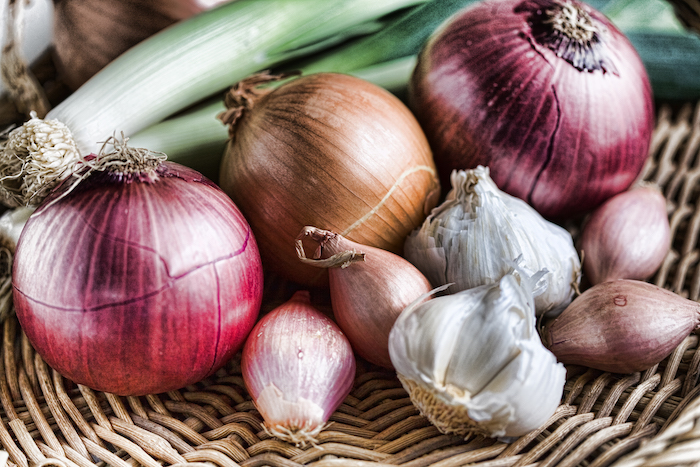Onions and garlic are key ingredients in sofrito, a condiment that’s a staple of Puerto Rican cuisine. They may also be a recipe for reducing the risk of breast cancer, according to a study led by the University at Buffalo and University of Puerto Rico researchers. The results of the first population-based study to examine the association between onion and garlic consumption and breast cancer were published in the journal Nutrition and Cancer.
“We found that among Puerto Rican women, the combined intake of onion and garlic, as well as sofrito, was associated with a reduced risk of breast cancer,” said Gauri Desai, the study’s lead author, who is an epidemiology Ph.D. student in UB’s School of Public Health and Health Professions.
In fact, those who consumed sofrito more than once per day had a 67% decrease in risk compared to women who never ate it.
The idea for the study stemmed from previous scientific evidence showing that eating onions and garlic may have a protective effect against cancer.
“Studying Puerto Rican women who consume a lot of onions and garlic as sofrito was unique,” Desai said, adding that it was the total intake of onions and garlic, not sofrito alone, that was associated with breast cancer risk.
Puerto Rico was a perfect place to study because women there consume larger amounts of onions and garlic than in Europe and the U.S., due largely to the popularity of sofrito, Desai noted. Onions and garlic also are eaten regularly in “guisos” (stews), as well as in bean- and rice-based dishes in Puerto Rican cuisine.
In addition, “Puerto Rico has lower breast cancer rates compared to the mainland U.S., which makes it an important population to study,” Desai said.
“There is very little research on breast cancer in Puerto Rico. This study was a collaboration between my colleagues here at UB and at the University of Puerto Rico to help us understand why rates there are lower than in the rest of the U.S., and why rates there are continuing to increase while they are decreasing in the rest of the United States,” said study co-author Jo Freudenheim, PhD, chair of epidemiology and environmental health at UB.
So, why the focus on these two ingredients? “Onions and garlic are rich in flavonols and organosulfar compounds,” Desai said. In particular, garlic contains compounds such as S-allylcysteine, diallyl sulfide, and diallyl disulfide, while onions contain alk(en)yl cysteine sulphoxides. “These compounds show anticarcinogenic properties in humans, as well as in experimental animal studies,” said Lina Mu, the study’s senior author, who is an associate professor of epidemiology and environmental health at UB.
Study participants were enrolled in the Atabey Study of Breast Cancer, a case-control study named after the Puerto Rican goddess of fertility. The study was conducted between 2008 and 2014 and included 314 women with breast cancer and 346 control subjects.
Source: Gauri Desai, Michelle Schelske-Santos, Cruz M. Nazario, Rosa V. Rosario-Rosado, Imar Mansilla-Rivera, Farah Ramírez-Marrero, Jing Nie, Ajay A. Myneni, Zuo-Feng Zhang, Jo L. Freudenheim, Lina Mu. Onion and Garlic Intake and Breast Cancer, a Case-Control Study in Puerto Rico. Nutrition and Cancer, 2019; 1 DOI: 10.1080/01635581.2019.1651349













[…] Source […]